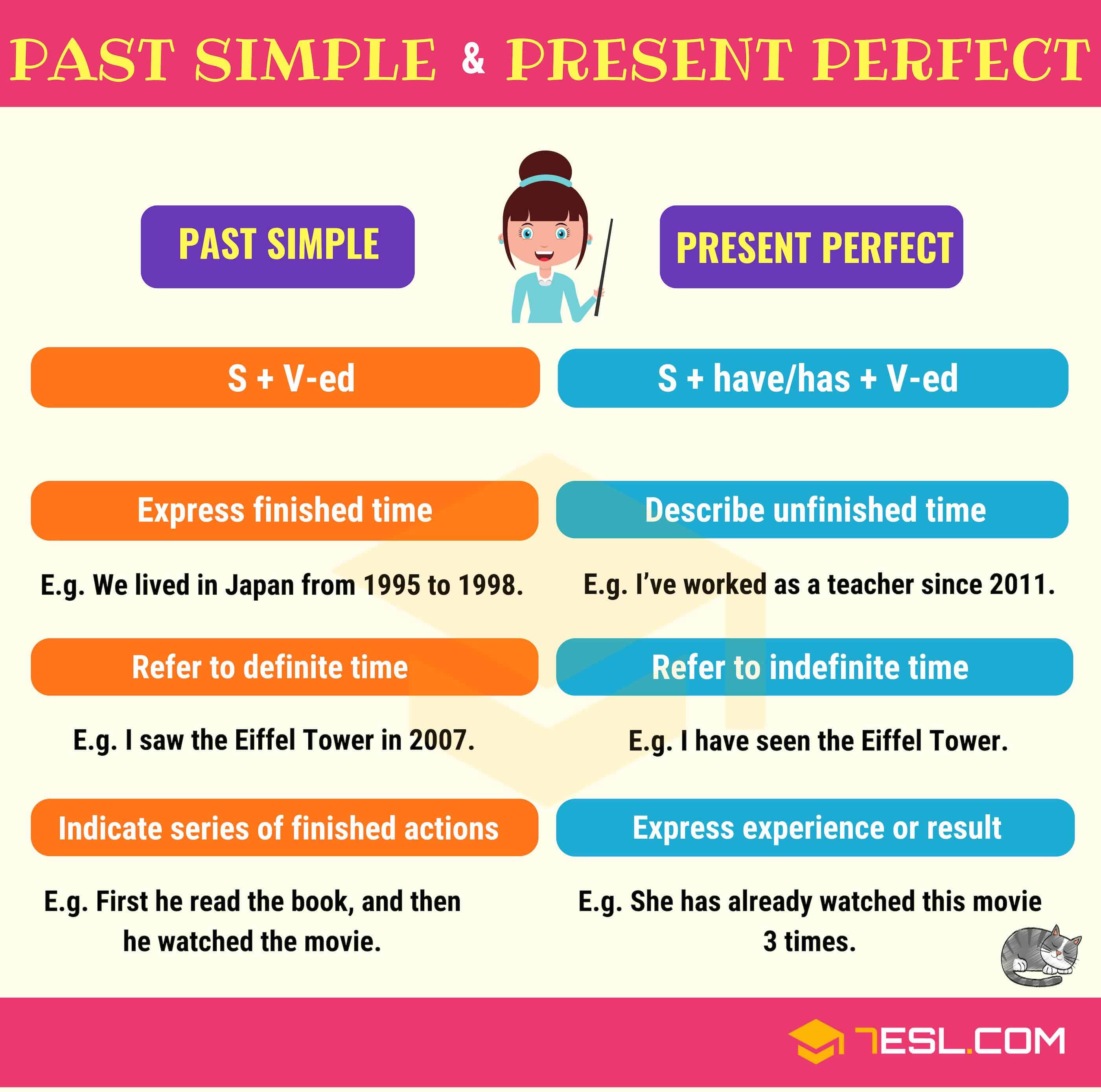Present Perfect vs Past Simple! Learn the difference between Past Simple and Present Perfect Tense in English with useful grammar rules and example sentences.
Present Perfect vs Past Simple
Past Simple and Present Perfect Differences in Form
- Past Simple Tense:
S + V-ed
- Present Perfect Tense:
S + have/ has + V-ed
Present Perfect and Past Simple Differences in Usage
- The past simple tense is used to express finished time; In contrast, the present perfect tense describes unfinished time.
Examples:
We lived Japan in from 1995-1998. (a time period that started and ended in the past) (past simple)
I’ve worked as a teacher since 2011. (a time period that started in the past, and continues until now) (present perfect)
- The past simple tense is used to refer to definite time, while the present perfect tense refers to indefinite time.
Examples:
I saw the Eiffel Tower in 2007. (past simple)
I have seen the Eiffel Tower. (present perfect)
- The past simple tense indicates series of finished actions or repeated actions; the present perfect tense expresses experience or result.
Examples:
First, he read book and then he watched movie. (past simple)
He went to the cinema every weekend last year. (past simple)
Have you ever seen this movie? (present perfect)
She has already watched this movie 3 times. (present perfect)
Time Phrases for Past Simple vs Present Perfect
Past Simple Tense
Yesterday
Ago
Last
In 1994, etc.
In the 20th century,etc.
In July, etc.
On Monday, etc.
…
Present Perfect Tense
Already
Just
Yet
Ever
Never
For
Since
…
Past Simple vs Present Perfect | Picture
Learn the Difference between Present Perfect and Past Simple in English with Picture.

Present Perfect vs Past Simple in English








0 Comments